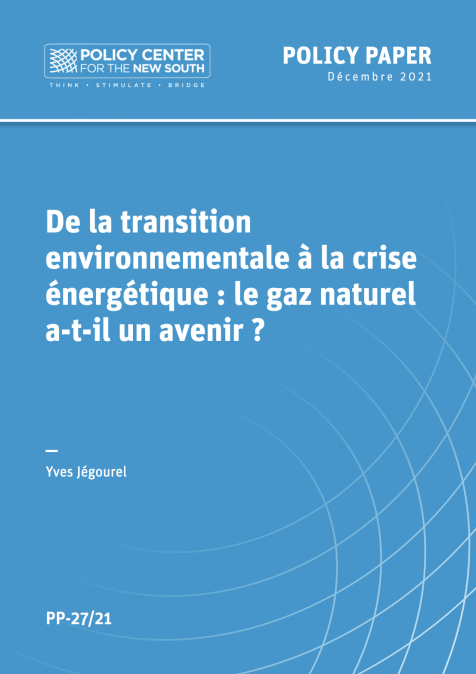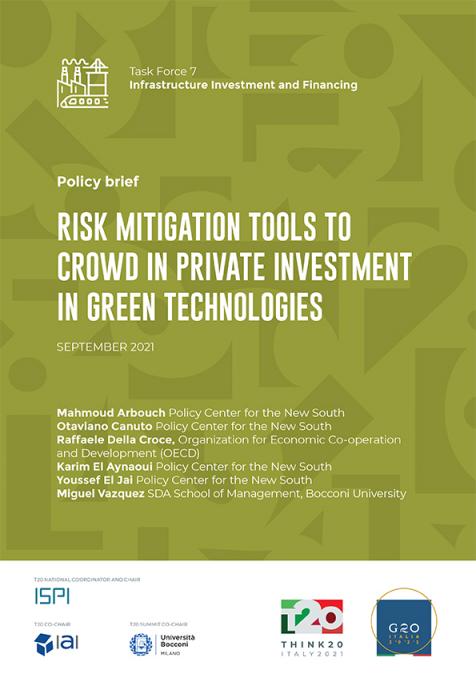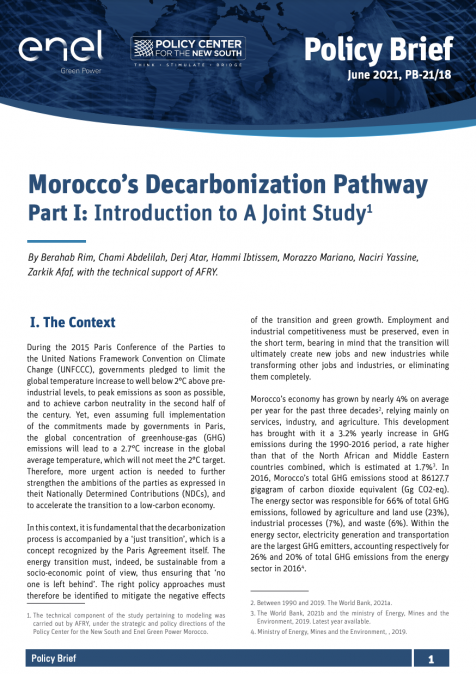Publications /
Opinion
In an effort to spur economic growth, industrial parks were created to combine industrial activities with infrastructure, service, and commercial activities. These parks involve a collection of businesses, utilizing a combination of heavy and light manufacturing, that are located in a dedicated zone for industrial use to boost efficiency, minimize operational costs, and maximize output. Though industrial parks can contribute to economic growth and social development in a region, they can also cause negative social and environmental impacts. These impacts include air and water pollution, greenhouse gas emissions, land contamination, over-extraction of resources, labor abuses, and social disruption. These impacts, in turn, contribute to climate change, environmental degradation, and deterioration of the social fabric (UNIDO, WBG & GIZ, 2017).
As the world moves deeper into a climate emergency, companies are under increasing pressure from consumers, governments, regulators, and nongovernmental organizations to operate more responsibly and incorporate environmental and social safeguards into their economic growth, particularly in their supply chains.
Eco-Industrial Parks (EIPs) have emerged as an alternative to industrial parks to meet this growing demand, offering the same business advantages while ensuring a more responsible use of natural resources and reduced exposure to climate change risks. EIPs provide a range of direct and indirect benefits to the industrial sector. Enterprises can improve capital efficiency, achieve utility cost savings, produce goods that are increasingly preferred by global consumers, attract foreign direct investment, increase exports, and generate additional revenues. These benefits and more have already been demonstrated by South Korea's EIP initiative (MOTIE, 2017) (UNIDO, WBG & GIZ, 2019).
An EIP is a cluster of manufacturing businesses that pool resources and share benefits and responsibilities in order to improve their environmental, economic, and social performance. The move to EIPs seeks to avoid the concentration of negative social and environmental impacts typically associated with industrial parks (World Bank Group, 2018) (UNIDO, WBG & GIZ, 2017).
The concept of an EIP was first presented in 1992 at the United Nations Conference on Environment and Development in Rio de Janeiro. In 2017, the World Bank Group (WBG), United Nations Development Organization (UNIDO), and Deutsche Gesellschaft für Internationale Zusammenarbeit (GIZ) GmbH created an international framework for EIPs, which defines the minimum social, economic, environmental, and park-management performance parameters for these parks.
In addition to complying with local and national regulations, each EIP is expected to align with international standards regarding the environment, including air emission limits, employment regulations, water extraction, watershed management, wastewater discharge limits, waste disposal and transportation techniques, hazardous waste handling, energy and resource efficiency, soil and groundwater contamination, noise limits during operations, natural environment and biodiversity protections, and climate change mitigation and adaptation. Social performance parameters include compliance with national and local regulations on human rights, protection of indigenous people, discrimination, and labor. Economic compliance includes national and local regulations pertaining to financial disclosure, employment creation and local skills development, promotion and development of local businesses, technology transfer and intellectual property protections, vocational training, and trade. Park management is expected to ensure compliance with occupational health and safety (OHS) standards, anti-corruption rules, violence and crime prevention, land use planning, zoning and permitting, intellectual property, trade, emergency awareness and preparedness, and local by-laws related to national regulations. Optimal park performance is dependent on a system of checks and balances involving regulators, inspectors, and park managers (UNIDO, WBG & GIZ, 2017).
Implementing an Eco-Industrial Park
The Practitioner's Handbook for Eco-Industrial Parks by the WBG, UNIDO, and GIZ (2019) recommends developing an institutional framework at the national level as a crucial step for successful EIP implementation. Table 1 summarizes the step-by-step process for developing this framework.
Table 1: Overview of the Step-by-Step Process for Developing National EIP Frameworks (UNIDO, WBG & GIZ, 2019)
|
Steps |
Activites |
Responsible entities |
|
|
|
|
|
|
|
|
|
|
|
|
The handbook also gives guidance for any entity that wants to implement an EIP at the industrial-park level where a national institutional framework does not exist. Table 2 summarizes these steps.
Table 2: Overview of the Process for Implementing an EIP Framework at the Park Level (UNIDO, WBG & GIZ, 2019)
|
Steps |
Activites |
Responsible Entities |
|
|
|
|
|
|
|
|
|
|
|
|
EIPs in Developing Countries
In the context of climate change and water stress, sustainable development incorporating environmental safeguards is becoming increasingly important.
It is estimated that, by 2025, half of the world’s population will live in water-stressed areas, i.e. areas where water demand exceeds the amount of water available (WHO, 2019). Currently, more than one quarter of the world's population lives in regions with extremely high water stress (Hofste et al, 2019). Because of the increasing stress on water resources, competition between water users—industrial, agricultural, and municipal users, as well as nations that share water bodies—is growing. For example, as of August 2019, data showed that Qatar, Israel, and Lebanon are experiencing “extremely high” levels of water stress, with irrigated agriculture, industries, and municipalities consuming over 80% of their available supply each year on average (UNEP, 2019). Pakistan is estimated to reach absolute water scarcity by 2025 (Al Jazeera, 2021). Many water users are not only over-extracting water resources but are simultaneously polluting them with wastewater effluents.
Emissions from factories and industrial parks contribute to the climate crisis and pose significant health risks to communities surrounding these industrial areas. According to the Intergovernmantal Panel on Climate Change (IPCC), industry was responsible for 30% of global greenhouse gas (GHG) emissions in 2010. Industry-related GHG emissions have more than doubled since 1970 and continue to increase; these emissions are higher than GHG emissions from other end-use sectors (Fischedick et al, 2014). In addition to GHG emissions, pollutants including fine dust, heavy metals, volatile organic compounds, and polycyclic aromatic hydrocarbons are emitted from most industrial areas. Numerous studies have found that residents living near industrial areas have a greater prevalence of respiratory and cardiovascular illnesses, allergy symptoms, acute eye disorder, lung and uterine cancers, adverse pregnancy outcomes, end-stage renal disease and more (Eom et al, 2018) (Brender et al, 2011) (Al-Wahaibi and Zeka, 2015). EIPs offer businesses and the wider industry sector an opportunity to implement said improved management and environmental best practices in their supply chains.
Many governments, including Bangladesh, China, Colombia, Egypt, India, Japan, Morocco, South Korea, Thailand, Turkey, and Vietnam, are recognizing the importance of incorporating environmentally sustainable approaches into manufacturing and are planning to scale up inclusive and sustainable industrialization by developing national EIP frameworks (UNIDO, WBG & GIZ, 2019). In 2000, there were fewer than 50 EIPs in operation; this has increased to over 300 EIPs operating or under development worldwide today, with clusters that include big corporations such as H&M Group, VF Corporation, and PVH Corp (World Bank Group, 2018). EIPs are a promising alternative to industrial parks in both developing and developed economies.
Bibliography
Al Jazeera. (2021, April 15). Pakistan’s Water Crisis [Video]. Climate News | Al Jazeera. https://www.aljazeera.com/program/101-east/2021/4/15/pakistans-water-crisis
Al-Wahaibi, A., Zeka, A. Health impacts from living near a major industrial park in Oman. BMC Public Health 15, 524 (2015). https://doi.org/10.1186/s12889-015-1866-3
Brender, J. D., Maantay, J. A., & Chakraborty, J. (2011). Residential Proximity to Environmental Hazards and Adverse Health Outcomes. American Journal of Public Health, 101(S1), S37–S52. https://doi.org/10.2105/ajph.2011.300183
Eom, S. Y., Choi, J., Bae, S., Lim, J. A., Kim, G. B., Yu, S. D., Kim, Y., Lim, H. S., Son, B. S., Paek, D., Kim, Y. D., Kim, H., Ha, M., & Kwon, H. J. (2018). Health effects of environmental pollution in population living near industrial complex areas in Korea. Environmental Health and Toxicology, 33(1), e2018004. https://doi.org/10.5620/eht.e2018004
Fischedick M., J. Roy, A. Abdel-Aziz, A. Acquaye, J.M. Allwood, J.-P. Ceron, Y. Geng, H. Kheshgi, A. Lanza, D. Perczyk, L. Price, E. Santalla, C. Sheinbaum, and K. Tanaka, 2014: Industry. In: Climate Change 2014: Mitigation of Climate Change. Contribution of Working Group III to the Fifth Assessment Report of the Intergovernmental Panel on Climate Change [Edenhofer, O., R. Pichs-Madruga, Y. Sokona, E. Farahani, S. Kadner, K. Seyboth, A. Adler, I. Baum, S. Brunner, P. Eickemeier, B. Kriemann, J. Savolainen, S. Schlömer, C. von Stechow, T. Zwickel and J.C. Minx (eds.)]. Cambridge University Press, Cambridge, United Kingdom and New York, NY, USA.
https://www.ipcc.ch/site/assets/uploads/2018/02/ipcc_wg3_ar5_chapter10.pdf
Hofste, R. W., Reig, P., & Schleifer, L. (2019, August 6). 17 Countries, Home to One-Quarter of the World’s Population, Face Extremely High Water Stress. World Resources Institute. https://www.wri.org/insights/17-countries-home-one-quarter-worlds-population-face-extremely-high-water-stress .
MOTIE. 2017. Internal statistics report. Korean Ministry of Trade, Industry and Energy.
UN Water. (2021). Transboundary Waters. UN-Water. https://www.unwater.org/water-facts/transboundary-waters/
UNEP. (2019, August 19). Water stress: Why integrated management matters. UNEP | Story | Water. https://www.unep.org/news-and-stories/story/water-stress-why-integrated-management-matters .
United Nations Industrial Development Organization; World Bank Group; Deutsche Gesellschaft für Internationale Zusammenarbeit. 2017. An International Framework for Eco-Industrial Parks. World Bank, Washington, DC. © World Bank. https://openknowledge.worldbank.org/handle/10986/29110
United Nations Industrial Development Organization; World Bank Group; Deutsche Gesellschaft für Internationale Zusammenarbeit; Ministry of Trade, Industry and Energy of the Republic of Korea. 2019. A Practitioner's Handbook for Eco-Industrial Parks : Toolbox. World Bank, Washington, DC. © World Bank. https://openknowledge.worldbank.org/handle/10986/31456
WHO. (2019, June 15). Fact sheets | Drinking-water. WHO | World Health Organization. https://www.who.int/news-room/fact-sheets/detail/drinking-water
World Bank Group. (2018, January 23). Eco-Industrial Parks Emerge as an Effective Approach to Sustainable Growth. World Bank. https://www.worldbank.org/en/news/feature/2018/01/23/eco-industrial-parks-emerge-as-an-effective-approach-to-sustainable-growth









